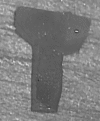Cartilage ossiculoplasty in cholesteatoma surgery: hearing results and prognostic factors
- PMID: 26824916
- PMCID: PMC4720926
- DOI: 10.14639/0392-100X-590
Cartilage ossiculoplasty in cholesteatoma surgery: hearing results and prognostic factors
Abstract
Cartilage tympanoplasty is an established procedure for tympanic membrane and attic reconstruction. Cartilage has been used as an ossiculoplasty material for many years. The aim of this study was to evaluate hearing results of costal cartilage prostheses in ossicular chain reconstruction procedures in subjects operated on for middle ear cholesteatoma and to determine the presence of prognostic factors. Candidates for this study were patients affected by middle ear cholesteatoma whose ossicular chain was reconstructed with a chondroprosthesis. 67 cases of ossiculoplasty with total (TORP) or partial (PORP) chondroprosthesis were performed between January 2011 and December 2013. Follow-up examination included micro-otoscopy and pure tone audiometry. The guidelines of the Committee on Hearing and Equilibrium of the American Academy of Otolaryngology Head and Neck Surgery were followed and pure-tone average (PTA) was calculated as the mean of 0.5, 1, 2 and 4 kHz thresholds. Statistical analysis was performed with ANOVA tests and regression models. Average air-bone gap (ABG) significantly improved from 39.2 dB HL (SD 9.1 dB HL) to 25.4 dB HL (SD 11 dB HL) (p < 0.001). Linear regression analysis showed that the only prognostic factor was the type of operation (p = 0.02). In fact, patients submitted to ICWT presented better post-operative ABG compared to CWDT. None of the other variables influenced the results. The present study proposes costal cartilage as material of choice when autologous ossicles are not available. The maintenance of the posterior canal wall was the only prognostic factor identified.
La cartilagine è comunemente utilizzata per la ricostruzione della membrana timpanica e dell'attico in corso di timpanoplastica. Nella nostra esperienza la cartilagine costale omologa è stata utilizzata per molti anni per la creazione di protesi ossiculari. Scopo di questo studio è stato quello di valutare i risultati funzionali dell'ossiculoplastica con condroprotesi e di identificare fattori prognostici. Abbiamo valutato pazienti affetti da otite media cronica colesteatomatosa la cui catena ossiculare è stata ricostruita mediante condroprotesi. 67 soggetti sono stati sottoposti a ossiculoplastica totale (TORP) o parziale (PORP) tra gennaio 2011 e dicembre 2013. Per la valutazione dei risultati uditivi sono state utilizzate le Linee Guida della "Committee on Hearing and Equilibrium" dell'American Academy of Otolaryngology Head and Neck. L'analisi statistica dei risultati è stata eseguita con test ANOVA e modelli di regressione lineare. Il gap via aerea-via ossea (ABG) migliorava significativamente dopo ossiculoplastica da 39,2 dB HL (DS 9,1 dB HL) a 25,4 dB HL (DS 11 dB HL) (p < 0,001). L'analisi statistica ha dimostrato che l'unico fattore prognostico è stato il tipo di tecnica chirurgica utilizzata. Infatti, i pazienti sottoposti a timpanoplastica chiusa hanno presentato miglior ABG postoperatorio rispetto alla timpanoplastica aperta (p = 0,02). Tutte le altre variabili analizzate non hanno influenzato i risultati uditivi. La cartilagine costale è il nostro materiale scelta per la creazione di protesi ossiculari quando gli ossicini autologhi non sono disponibili. La tecnica chirurgica (timpanoplastica chiusa) si è dimostrata quale unico fattore prognostico positivo.
Keywords: Cholesteatoma; Ossicular Prosthesis; Ossiculoplasty; Surgery.
Figures
References
-
- Zollner F. The principles of plastic surgery of the sound conducting apparatus. J Laryng. 1955;69:637–637. - PubMed
-
- Attanasio G, Gaudio E, Mammola CL, et al. Autograft ossiculoplasty in cholesteatoma surgery: a histological study. Acta Otolaryngol. 2014;134:1029–1033. - PubMed
-
- Quaranta N, Zizzi S, Quaranta A. Hearing results using titanium ossicular replacement prosthesis in intact canal wall tympanoplasty for cholesteatoma. Acta Otolaryngol. 2011;131:36–40. - PubMed
-
- Pringle MB, Sunkaraneni VS, Tann N. Is cartilage interposition required for ossiculoplasty with titanium prostheses? Otol Neurotol. 2014;35:482–488. - PubMed
Publication types
MeSH terms
LinkOut - more resources
Full Text Sources
Miscellaneous




